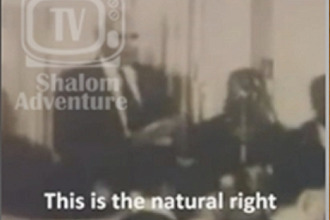Even though masks, costumes, flashy colors, and carnival themes are nowhere reflected in a scriptural analysis of the Book of Esther, the Mishnah, Talmud, or otherwise in early rabbinic writings, it has become very much a Purim tradition of the Jewish people not only of the High Middle Ages but of modern times as well.
Believed to have derived from the Italian Jews, the wearing of masks at Purim is believed to date back to the 14th and 15th century, Haaretz reported.
The tradition may have evolved from pre-Lenten festivals of a catholic majority residing in Italy which also involved a carnival-like atmosphere, festivities, masks, and colorful costumes. Lent often coincides with Purim depending on the exact alignment of the Gregorian and Jewish calendars on a given year.
From Italy, the practice spread to other Jewish communities worldwide, much to the displeasing of many rabbis who disapproved of the practice. Besides the pagan roots and lack of direct relevancy or basis in the scriptures or rabbinic writings, many rabbis were notably disgusted by men and women cross-dressing as the other gender, citing Deuteronomy 22:5 to denounce the practice.
Yet the traditions of the minor festival of Purim live on in Jewish culture today.
“The costume symbolizes this hidden miracle. Things are not always as they appear. G-d is always in our life. Sometimes He is hidden and sometimes His presence is more obvious,” Rabbi Moshe Rothchild said on United for Israel.
”On Passover, we celebrate G-d’s obvious hand in the world, and on Purim we celebrate the subtle hand of G-d that is tapping us ever so gently on the shoulder, reminding us of how much he cares and loves us,” the Rabbi continued. “The trick is to look at the mask and realize that there is something going on beneath the surface.”
“This is how we have to look at our friends, family and strangers. Everyone wears masks, and they wear them every day. If we remember this, it will help us to judge all mankind favorably, knowing that beneath the mask there is a spark of G-d in all of us.”
Written Erin Parfet


























